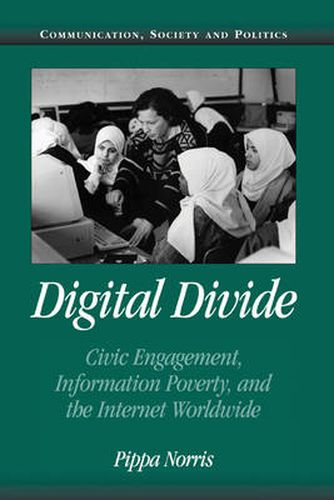Readings Newsletter
Become a Readings Member to make your shopping experience even easier.
Sign in or sign up for free!
You’re not far away from qualifying for FREE standard shipping within Australia
You’ve qualified for FREE standard shipping within Australia
The cart is loading…






There is widespread concern that the growth of the Internet is exacerbating inequalities between the information rich and poor. Digital Divide examines access and use of the Internet in 179 nations world-wide. A global divide is evident between industrialized and developing societies. A social divide is apparent between rich and poor within each nation. Within the online community, evidence for a democratic divide is emerging between those who do and do not use Internet resources to engage and participate in public life. Part I outlines the theoretical debate between cyber-optimists who see the Internet as the great leveler. Part II examines the virtual political system and the way that representative institutions have responded to new opportunities on the Internet. Part III analyzes how the public has responded to these opportunities in Europe and the United States and develops the civic engagement model to explain patterns of participation via the Internet.
$9.00 standard shipping within Australia
FREE standard shipping within Australia for orders over $100.00
Express & International shipping calculated at checkout
There is widespread concern that the growth of the Internet is exacerbating inequalities between the information rich and poor. Digital Divide examines access and use of the Internet in 179 nations world-wide. A global divide is evident between industrialized and developing societies. A social divide is apparent between rich and poor within each nation. Within the online community, evidence for a democratic divide is emerging between those who do and do not use Internet resources to engage and participate in public life. Part I outlines the theoretical debate between cyber-optimists who see the Internet as the great leveler. Part II examines the virtual political system and the way that representative institutions have responded to new opportunities on the Internet. Part III analyzes how the public has responded to these opportunities in Europe and the United States and develops the civic engagement model to explain patterns of participation via the Internet.